
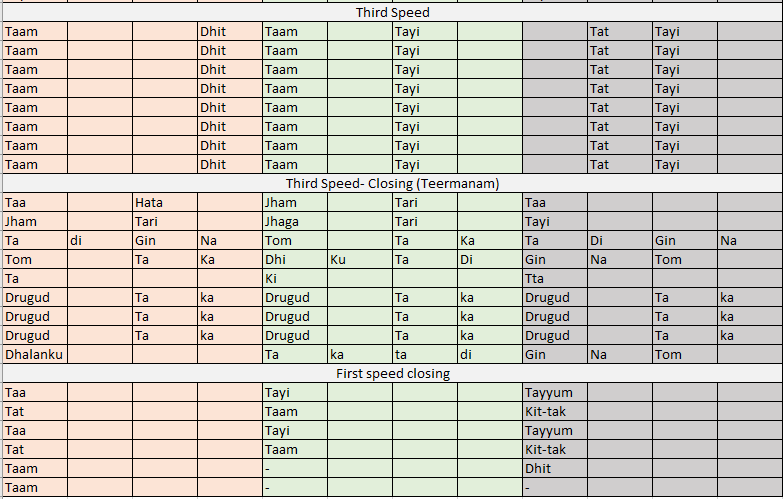
To Do: Add – Description, Meaning, position in margam, history. Any help will be appreciated.
This post contains “Tishra Ekam Alarippu in a tabular format”


To Do: Add – Description, Meaning, position in margam, history. Any help will be appreciated.
Friends, here is a fairy tale plot generator, which lets you make your own fairy tale. A small gift from me to the child in you on this Children’s day.
Enjoy making your own fairy tale. And do send me the end to your story.
Folks, How is this post? Comment here to pour your thoughts.
| Saraswati namastubhyam Varadekaamrupini |
|| Vidyarambham karishyami siddhirbhavatume sadaa|| 2||
Saraswati – Goddess saraswati / goddess of knowledge, namah – salutations / pay respect, tubhyam – to you, vara – boons / blessings, de – bestow us with, kaam – wishes / desires, rupini – embodiment, vidya – knowledge/ education, arambham – begin with/ commence, karishyami – I do/ perform/ undertake, siddhi – achievement/ accomplishment, bhavatu – let it be / prevail, sada – always.
Meaning of the shlokam:
O goddess Saraswati, the goddess of knowledge, I bow to you, the giver of boons, the embodiment of wish fulfiller. By seeking your blessings, I begin my pursuit of knowledge, and may I accomplish it with success, always.
Long time ago, there lived a hardworking bee. Whole day long it toiled flitting from flower to flower to collect nectar. It would then make honey with it in its hive.
“I’m always worried that someone may steal my honey,” thought the bee. So the bee flew to the god Jupiter. ” O Jupiter, I have brought some honey for you,” said the bee.
“Thank you, little bee. I shall grant you a wish in return.” said jupiter.
“Grant me, O Jupiter, a sting. If anyone tries to steal my honey, I may kill him with my sting.” said the bee.
Jupiter was shocked to hear this. “I shall grant you your wish, little bee,” said indignant Jupiter, “but when you sting someone, it will not just kill that person, it will kill you as well.”
Moral: If you wish bad for others, it brings a curse to yourself as well.
Once in a jungle, there lived a fox. The fox was very hungry for he had not eaten for many days. He felt very weak and longed to find something to eat. The fox sighed sadly, “Ohh! I wish I had some food. I have not eaten for many days.”
As the fox wandered around searching for food, he came to a village at the edge of the forest. There he saw a big vineyard hedged with thorny bushes. There were big clusters of ripe and juicy grapes hanging from the vines. The hungry fox jabbered, “Mmmm…, Ripe grapes. Let me have some. “
The fox looked around to see if any one from the village was around. He wished, “I hope none of the villagers see me here.” There was no one in sight. He squeezed himself into the vineyard through a hole in the hedge.
Not having eaten for many days, the poor fox feasted his eyes on the ripe, delicious looking grapes. But he soon realised that it was not within easy reach. The fox quipped, “The grapes are hanging quite high. I will have to jump to reach them.”
The fox jumped up with his mouth open to snap up a big bunch of grapes, but they were just beyond his reach. His mouth snapped over thin air and he could fetch nothing. He whimpered, “Ugh!! This is higher than I had thought. I should jump higher to get a mouthful of grapes.”
Thus, the hungry fox did not give up. The sight of ripe, juicy grapes was too much for him. He moved back a few paces so that he could run and jump higher. But the fox just could not jump high enough to reach the grapes.
He was hungry, weak and tired. Famished and angry now, he caught hold of one of the poles erected for holding up the vines and tried to shake them. Shaking the pole vigourously, he bawled, ” Grrrrr… Fall you wretched grapes. Adamant vine, can’t you see I am hungry?”
When even the shaking did not work, the fox at last gave up and turned to leave. As he was going, he took a last look at the grapes hanging on the vines. To console himself, the disappointed fox cursed the grapes, “So what if I did not get to eat any? I’m sure those grapes are very sour.”
MORAL: What you don’t get need not be bad.
Many years ago, there lived a brave woman named Obavva in the kingdom of Chitradurga in Karnataka, India. This story is the story of Obavva’s bravery, wit and presence of mind.
At that time, the Chitradurga fort was ruled by King Madakari Nayaka. It was a rough time in the history of Chitradurga. Hyder Ali of Mysore had tried to attack and besiege the fort multiple times. But the fort was so well and tactically built that Hyder Ali, even with his mighty army failed to conquer it.
One day, while keeping a watch on Chitradurga fort, Hyder Ali’s soldier accidentally discovered a small crevice which could enable them to enter inside the fort and conquer it. Delighted with this news, Hyder Ali, with his small bit of information, planned to attack the fort one more time. And this time, he dreamed of successfully conquering it by sending his army through the crevice. The crevice was so difficult to reach that one had to undertake a lot of climbing. Also, it was very narrow, only one person could pass through it at a time.
At that time, Kahale Hanuma, a guard in King Madakari Nayaka’s army was secretly guarding this crevice. Obavva was his wife. They stayed inside the fort and guarded this crevice all day and night.
One afternoon, when Kahale Hanuma went out for lunch, and Obavva had just begun going uphill to fetch water, Obavva saw Hyder Ali’s soldiers secretly trying to approach the crevice. She immediately sought a pestle (Onakke) and by using the secret internal path, positioned herself inside the crevice loosing no time.
As soon as a soldier crawled in through the crevice, she muffled the soldier’s mouth and struck him hard with the pestle. She had no prior experience in warfare or physical combat. But common sense told her to anticipate more soldiers and be ready for the next one while silently killing and hiding the previous enemy soldier.
As anticipated, more soldiers were crawling in one by one. One after another, she pounded them to death with the pestle and dragged their dead bodies aside. When her husband, Kahale Hanuma, returned from lunch, he was shocked to see blood soaked Obavva standing guard with a pestle and a lot of dead bodies strewn around her. He immediately sounded alert, warning his army about the breach of security and treacherous attempt of Hyder Ali’s army.
Obavva’s heroic act and presence of mind delayed Hyder Ali’s plan to besiege Chitradurga. Obavva perished the same day, however the cause of her death is unknown.
Obavva displayed exemplary courage in the face of threat. She single handedly fought with the enemy soldiers with whatever little resources she had. Thus, history remembers Onakke Obavva as an epitome of bravery for fighting off the enemy soldiers single handedly.
You can still visit the crevice where Obavva showed her bravery. Today it is known as “Obavvana Kindi”.
Moral: With presence of mind, courage and determination, one can overcome any challenge faced in life.
Long long ago, there lived an evil and fearsome demon named Mura in the city of Chandravati. He terrified all the living beings including the powerful demigods. With his terrible power and might, demon Mura had defeated Indra, the god of Heavens; Vivasvan, the Sun-god; the eight Vasus; Lord Brahma; Vayu, the god of Wind; and Agni, the god of Fire. He had expelled all the demigods from their positions and left them powerless.
Worried from the suffering caused by the atrocities of demon Mura, Lord Indra prayed to Lord Shiva, “O Lord Shiva, benovalent Bholenath, we are all suffering the atrocities of Mura and spending our life in Mrityu Loka. Please help us to get rid of this problem.” Upon hearing their problem, Lord Shiva suggested them to visit Lord Vishnu as he was the only one capable of dealing with this demon Mura.
As suggested by Lord Shiva, the Gods and demigods visited Lord Vishnu. After describing their terrible plight and suffering at the hands of demon Mura, they pleaded Lord Vishnu to kill this demon. Upon hearing this Lord Vishnu assured, “Do not fear, for I will deliver you from this problem. I will fight with demon Mura and annihilate him.”
Immediately, Lord Vishnu reached Chandravati with all the gods and demigods. When Mura and his army of demons saw Lord Vishnu arrive at their city, they began attacking him with all their power and weapons. A great battle ensued between the demon Mura and Lord Vishnu. The cunning demon Mura had acquired tremendous amount of power. He had acquired so much power that the weapons employed by Lord Vishnu didn’t affect him. The blows from Lord Vishnu’s weapons felt like a shower of flower for the wicked Mura. The battle continued for many years, but Mura could not be defeated.
Fatigued by the unending fight with demon Mura, Lord Vishnu left for Badrikashrama to take rest. There he entered a beautiful cave and went to sleep. Mura, with his tricks and mystical powers entered the cave with a determination to kill Lord Vishnu. Upon seeing Lord Vishnu fast asleep, Mura planned, “Today, at this very moment, I will kill this slayer of all demons.”
While the wicked-minded Mura was making his plans, a young maiden manifested from Lord Vishnu’s body. She carried various brilliant and shining weapons. She was ready to fight and challenged Mura for a duel. Challenged by a young female, Mura’s ego was hurt. He underestimated her and thought it must be very simple for him to defeat this young and incompetent lady.
A big fight began between the two. The young maiden was undefeatable. While fighting, surprised and tired Mura wondered, “Who is this angry, brave, fearsome girl? She has been fighting with me like a thunderbolt. I must not lose at the hands of this weak girl. It would be very shameful to taste such a defeat. Instead, I must win over her and make her my queen.” In that moment of distraction, the young maiden shattered all of Mura’s weapons and destroyed his chariot. Angered by this act, Mura hastily ran towards his attacker with bare hands to wrestle her down. But the young girl immediately sprung in action and slayed Mura’s head with a swipe of her sword. Looking at the pitiable fate of Mura, the helpless demon army fled from the battle and went in hiding. The young lady stood guard to ensure no one disturbed or harmed Lord Vishnu.
Upon waking up from his slumber, Lord Vishnu saw dead Mura as well as the maiden bowing down before him. Astonished he asked, “Who has killed this vicious demon? Who is it that has so mercifully protected me in my sleep? Whoever it is, ask any boon you may desire, and I promise to fulfill it.” The maiden replied, ” I, O Lord Vishnu, have killed this demon after appearing from your body. I am your maha-shakti. I have killed this terrifying demon to protect this universe, the three worlds. O Lord, if you are pleased with me, then give me the boon to deliver anyone from the greatest sin who fasts on this day of my birth.”
Pleased with her, Lord Vishnu replied, ” O auspicious lady, I have granted your desire. Since you have appeared on the eleventh day of waning moon in the auspicious month of Margashirsha, let your name be Ekadashi. Henceforth, all my devotees in this world will fast on your birth day.”
And thus , this is the story of goddess Ekadashi.
| Aangikam bhuvanama yasya|
|| Vaachikam sarva vaangamayam || 2||
| Aahaaryam chandra taaraadi |
|| Tam numah Saatvikam Shivam || 4||
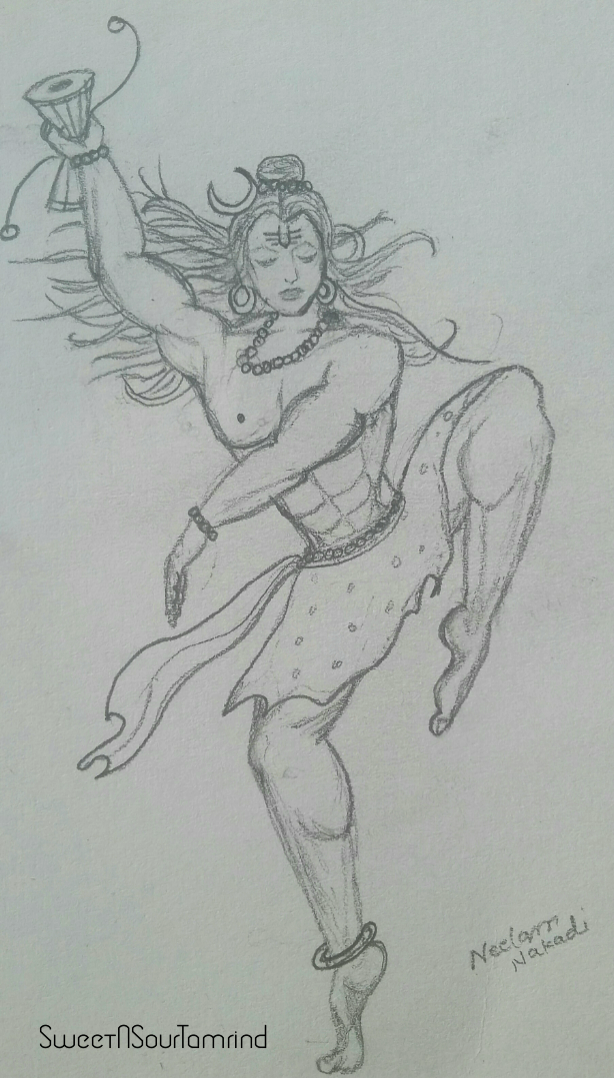
Aangikam – body, bhuvanam – universe, yasya – who’s, vaachikam – voice, sarva – all, vaangmayam – literature, aahaaryam -jewellary adorned, chandra – moon, taaraadi – stars etc, tam – to you, numah -I bow / worship, satvikam – true/ virtuous, Shivam -Lord Shiva.
Meaning of the shlokam:
He is the one, who has this entire universe as his body. All the literature is his voice. He adorns the Moon, Sun and stars as his jewellery. To him, the true, virtuous and auspicious Shiva, I bow.
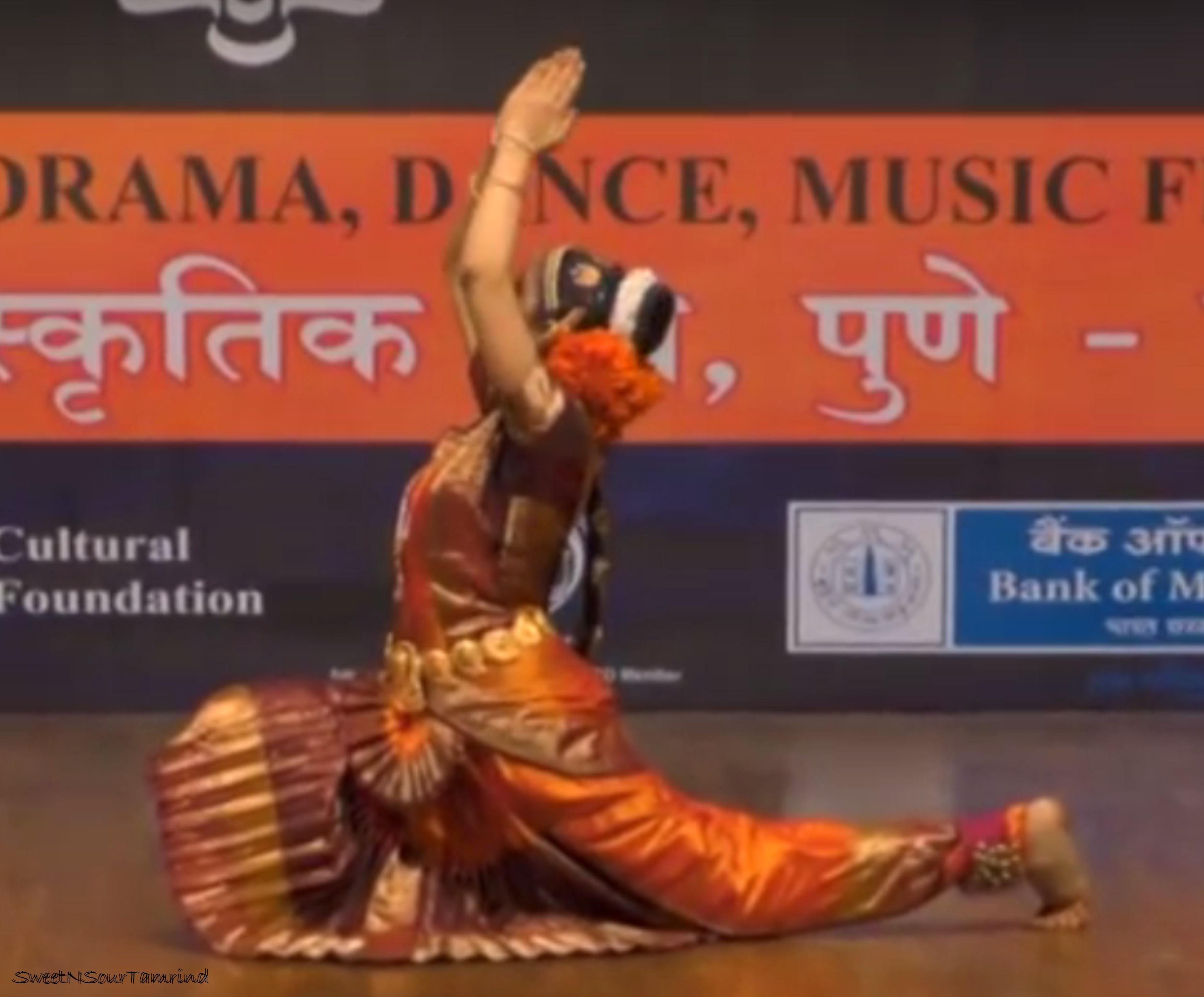
Folks, How is this post?
Comment here to pour your thoughts!!!
It’s always a pleasure to perform for Lord Shiva, the Lord of Dance. My teacher, Mrs Rajashree Khare and her students, got this beautiful opportunity to perform a Bharatanatyam dance recital as an offering to Chandramouleshwar Mahadeva. Here is a glimpse into the evening.
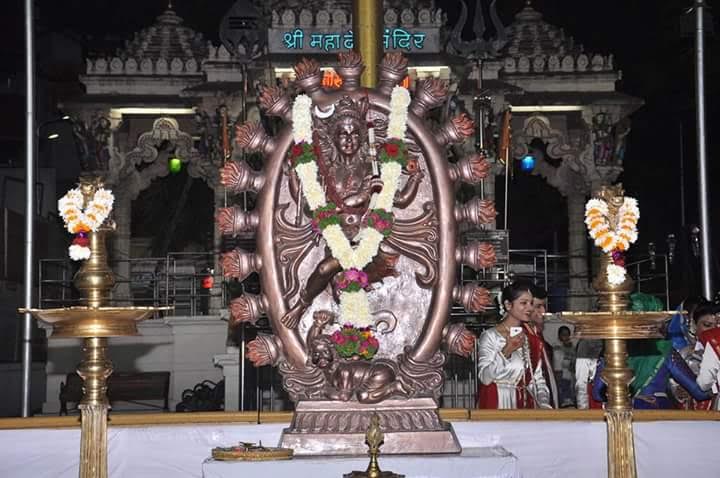
The evening began with Natesha Vandana.
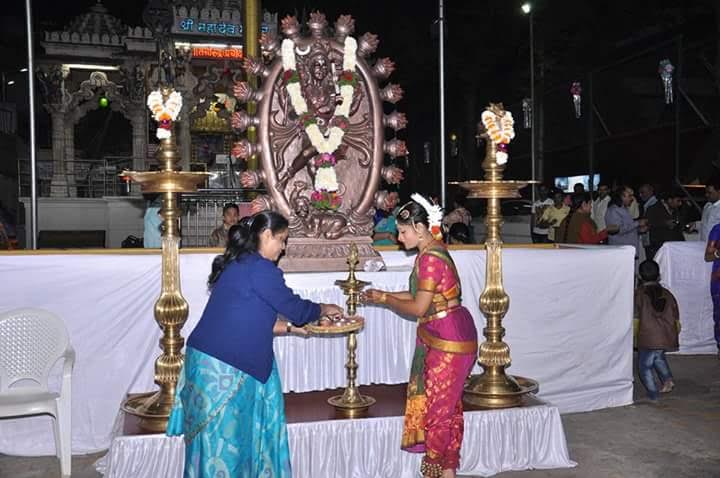
Mrs Rajashree Khare, a senior disciple of Guru Swati Datar, beautifully interlaced the pure Nritta and Nritya aspects of Bharatanatyam in the half an hour of performance at Chandramouleshwar temple. The performances for the evening began with a Ganesh Kautukam performed by Mrs. Rajashree Khare. It was an excellent amalgamation of fine padanyas (footwork), sculpturesque Karnas (Poses) and mesmerising Bhavas (expressions). This Ganesha Kautukam set the tone for the evening which saw four performances.
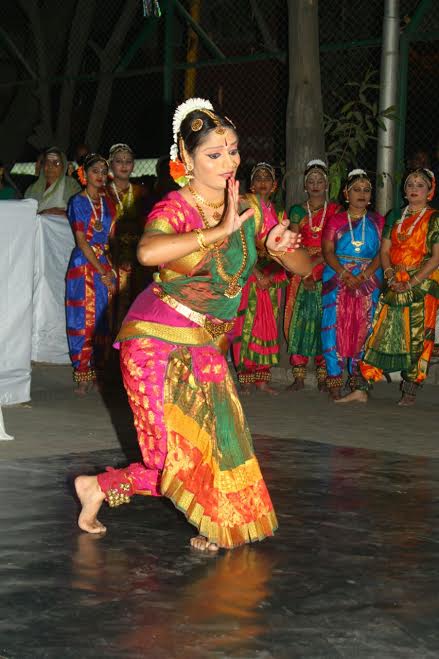
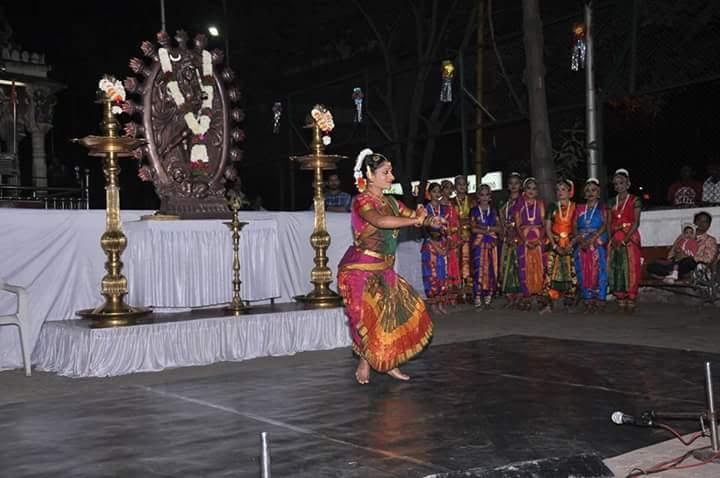
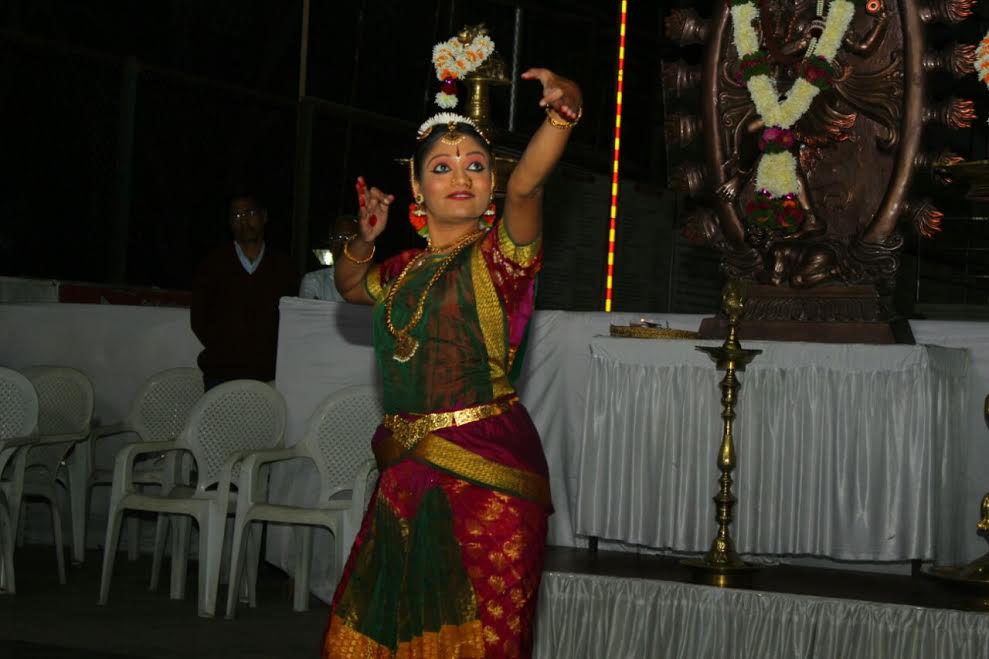
The next performance was Tishra Alarippu, a pure Nritta performance, performed by students of Mrs. Rajashree Khare. It was a wonderful presentation in Naatai raag, which brought forth the subtle, crisp and agile moves, emulating the movements of a blooming lotus flower.
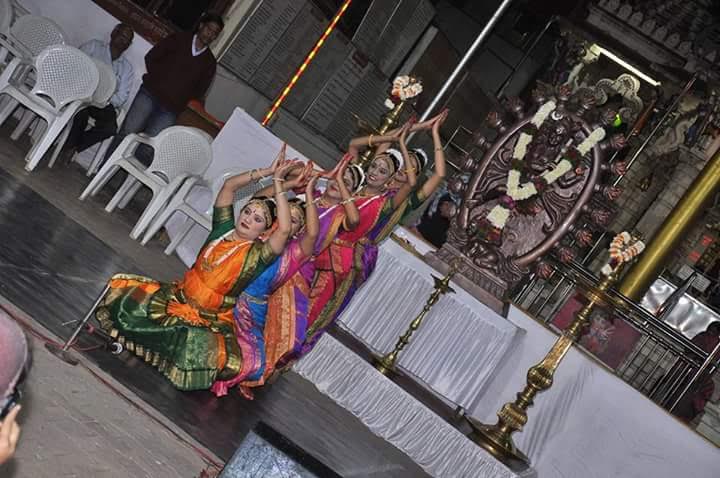
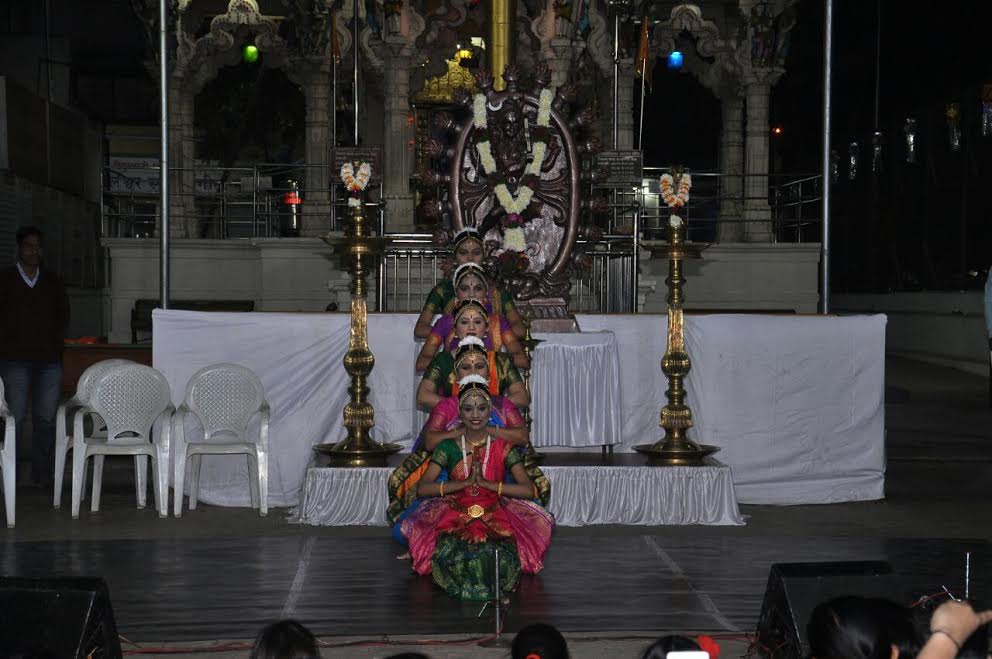
Energetic footwork and graceful postures marked the next performance, Natesha Kautukam in Raag – Hansadhwani, Taal – Adi. The calm Shiv Prarthana Shloka at the beginning of Natesha Kautukam set a peaceful tone. The effortless shift between Nritya and Nritta, along with wonderful formations appealed to the senses of the audience.
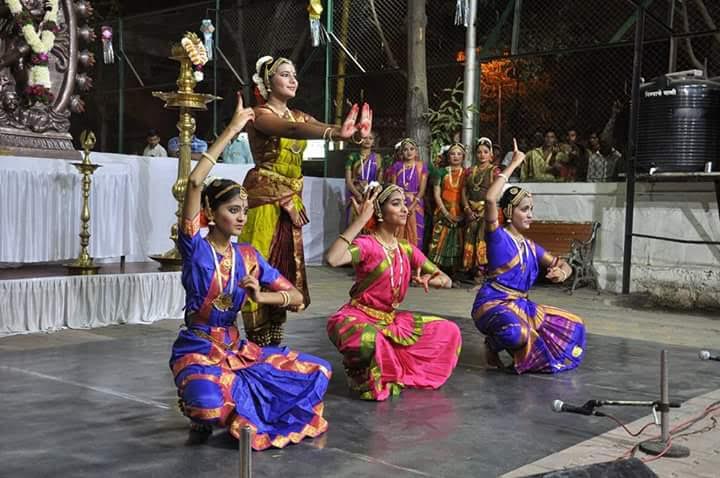
The next performance, Shiv Tandav Stotram composed by Lankadhipati Ravan, was savoured by the entire audience. The choreography took the audience from one frame to the other, depicting Lord Shiva and his beautiful form. This highly energetic and moving performance by Mrs. Rajashree Khare and her students brought the curtains down for the evening.
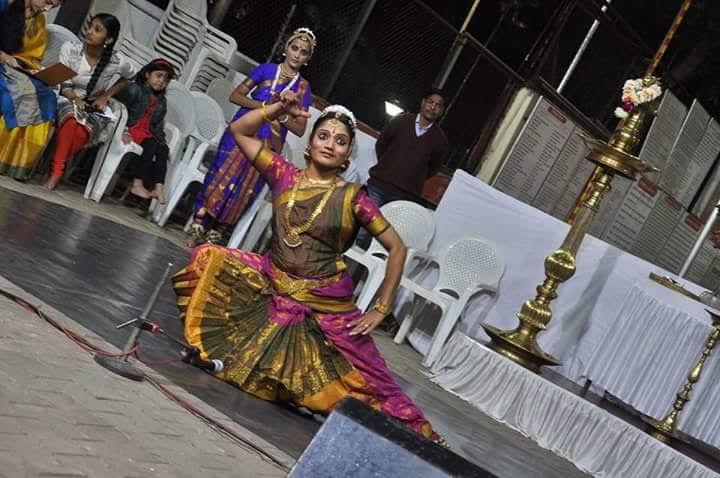
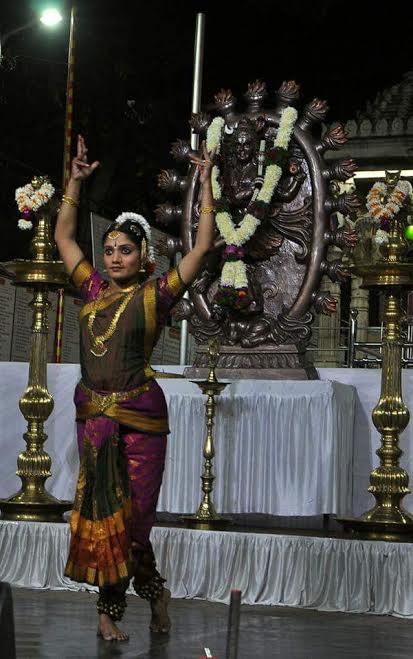
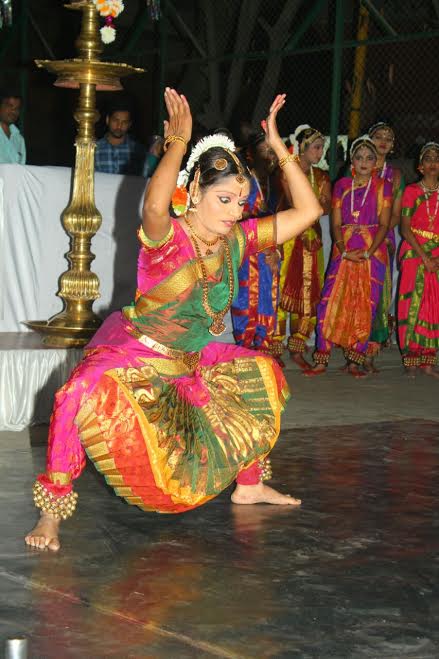
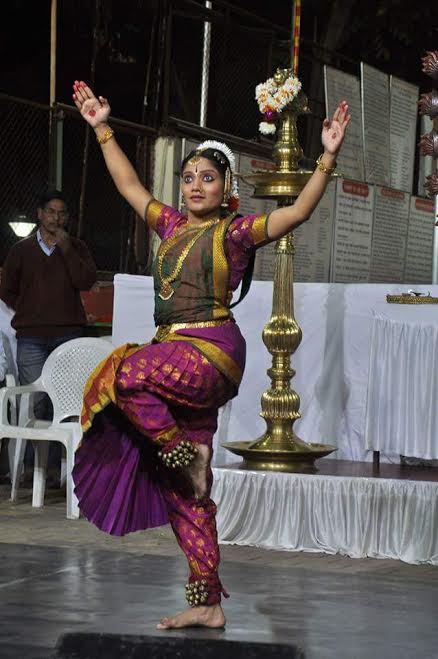
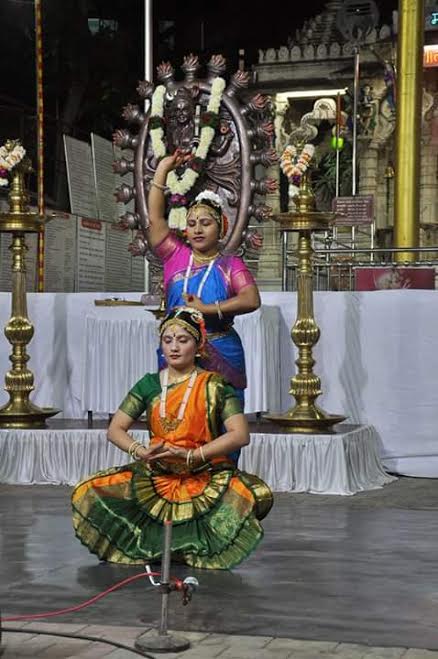
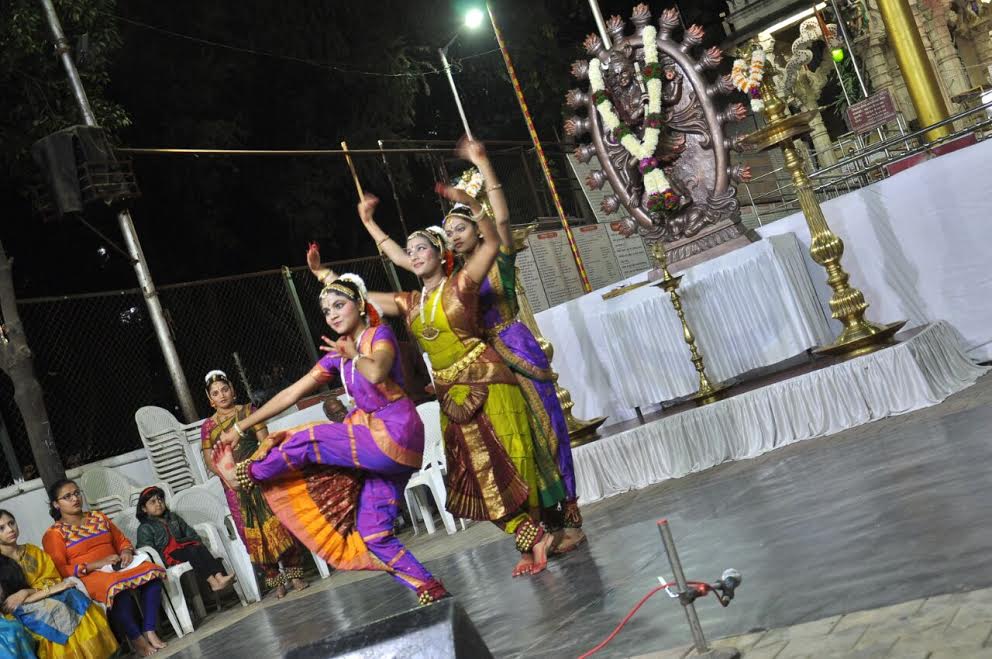
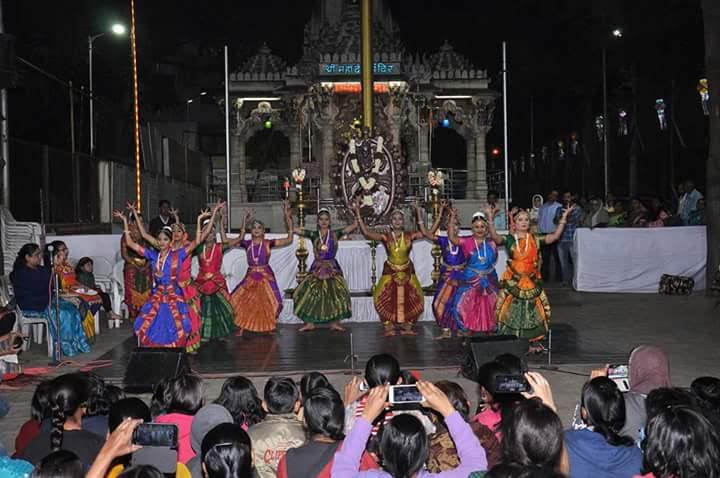
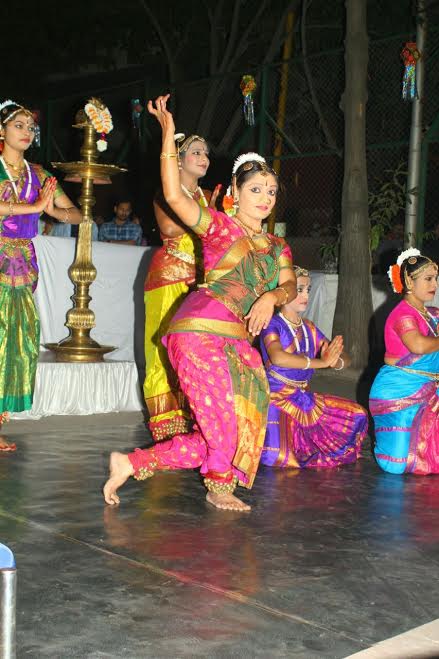
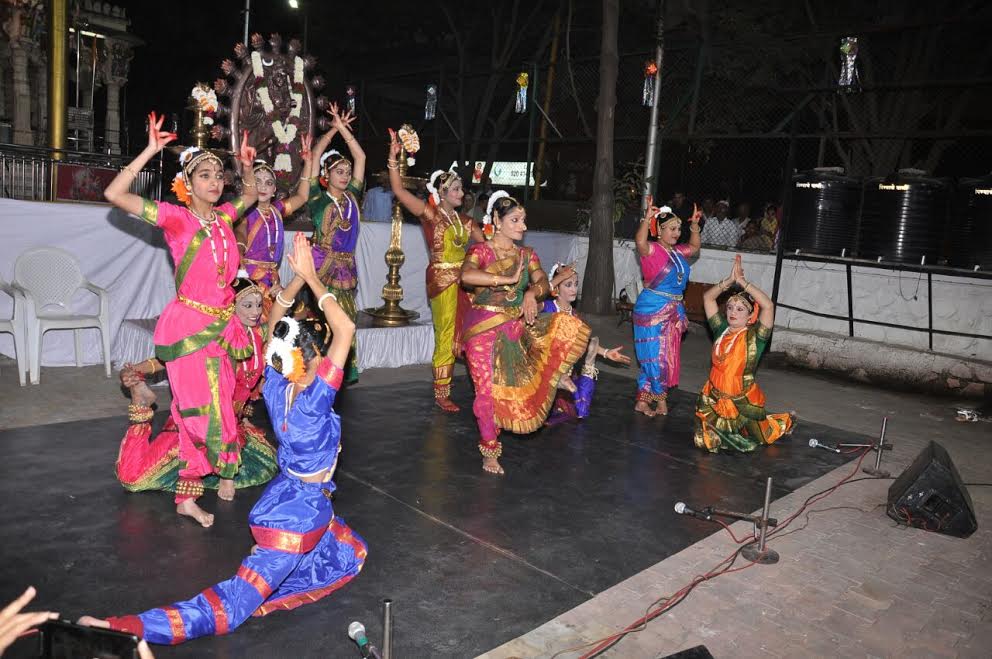
Mrs Rajashree Khare believes in nurturing this traditional art and keeping it in pristine form for future generations. For her, teaching is a two-way process as she learns while she teaches. She feels, dance is an intense feeling of joy and happiness. These feelings find ample of space in her choreography, both nritya and nritta.
Folks, How is this post? Comment here to pour your thoughts!!!
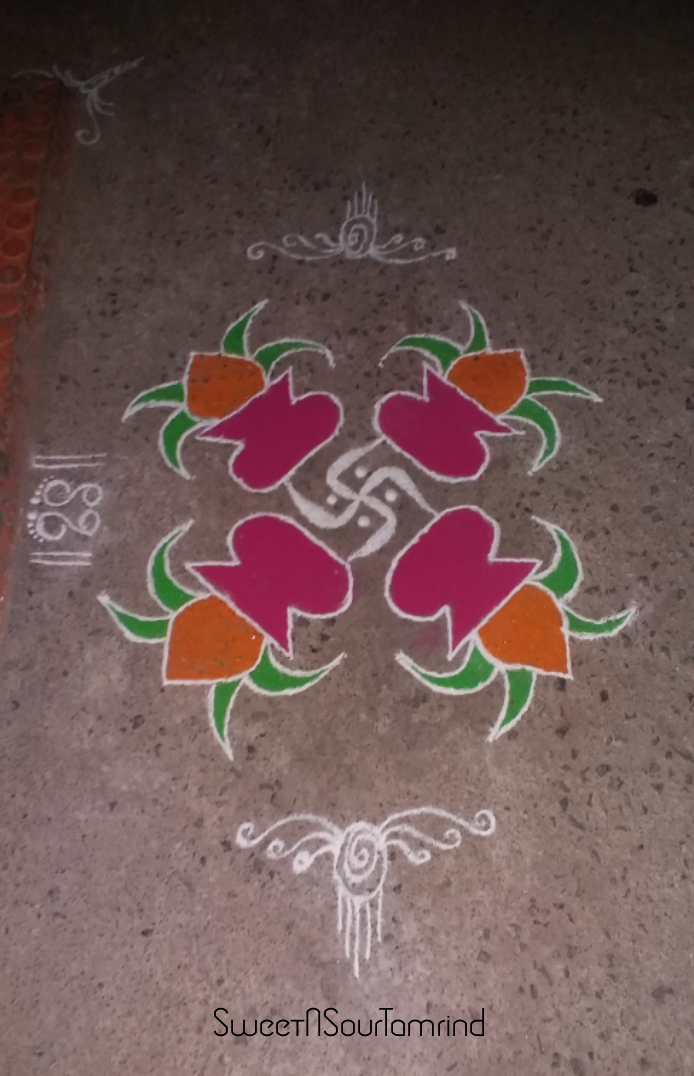
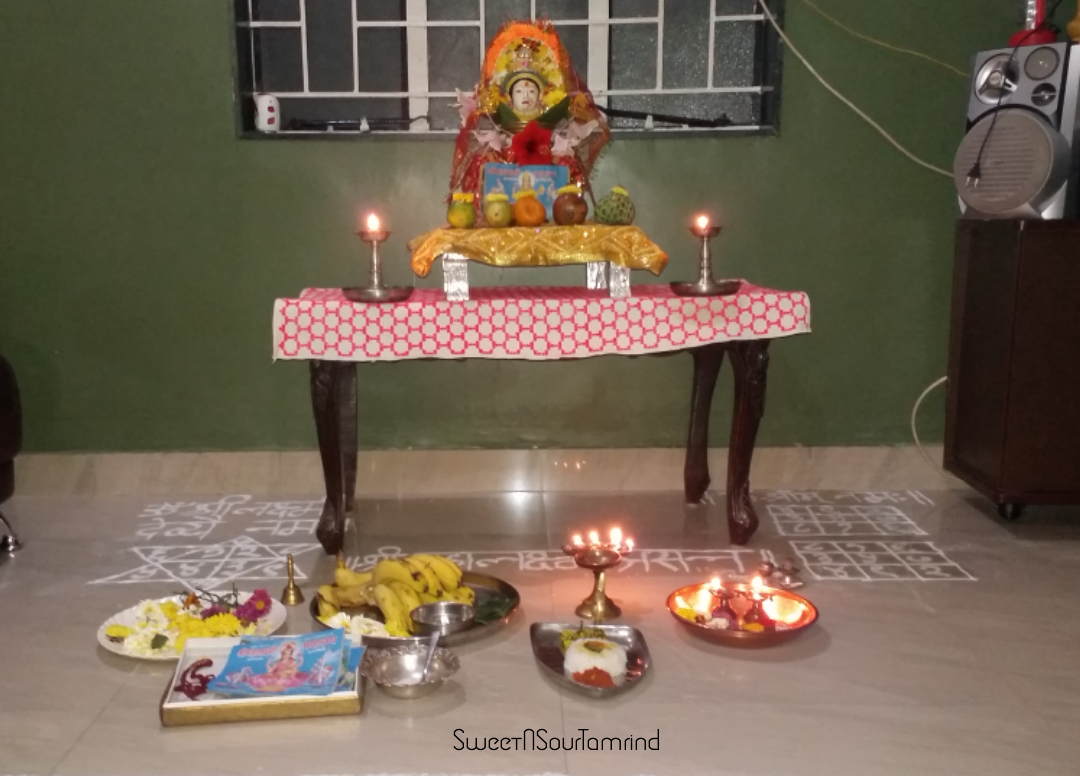
Hi,
After travelling across the length and breadth of our country I have realised that our people are the most racist people on the planet.
As a South Indian (my Mother is a South Indian), I have heard many infuriating rascist remarks. And I can’t help but wonder that even well educated people could be so disrespectful and racist.
A few of the most popular myths about Southies are as follows:
All South Indians are dark:- Wrong .. Not all southies are dark.. Fair N dusky complexions are also seen in south. Just to convince u… Look at most of the leading bollywood ladies like Aishwarya, Sridevi, Jayaprada, Deepika the list is long..
All southies wear lungi/ saree: – wrong… They too wear normal dresses like any other person from rest of the Indian states.
South Indians are reluctant to learn Hindi: – Somewhat true.. but it also depends on the necessity, exposure N opportunity to learn.
Southies are all madrasi: – Absolutely wrong.. I havent come across a map of India where the area below Vindhyas was labled as M.A.D.R.A.S. If that were true, even Gujrat and Maharashtra would become M.A.D.R.A.S
All southies eat only rice: – wrong… ragi muddi, bhakri, holgi have been a part of the diet much before rice and wheat were introduced.
This is not the only racist behaviour I have seen. It is sad that our fellow Indians from north eastern states are treated like outsiders in our own country. It is really sad that we are still nurturing the seed of hatred sown by British Colonial Rulers and abusing our own people.
It is my humble request to all, not to make such rascist comments against our own people. They add a different colour to our fabric of diversity. They enrich our culture. They are also humans just like rest of us. They are also a part of our India.
Jai Hind!
Folks, How is this post? Comment here to pour your thoughts!